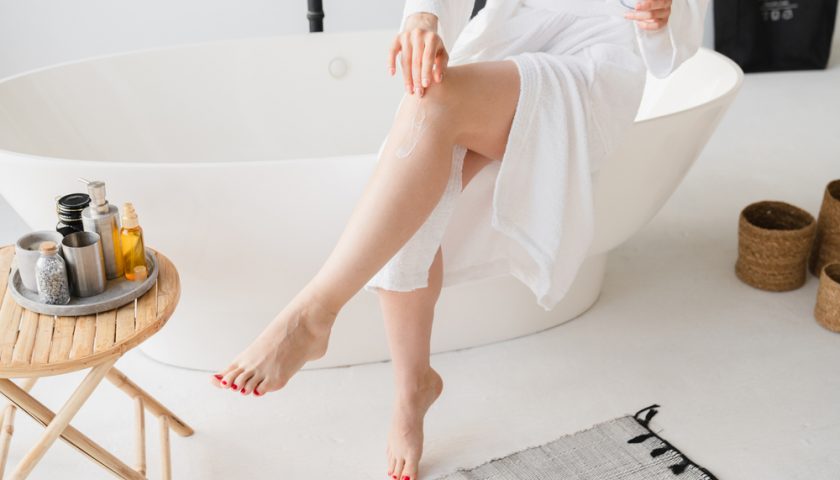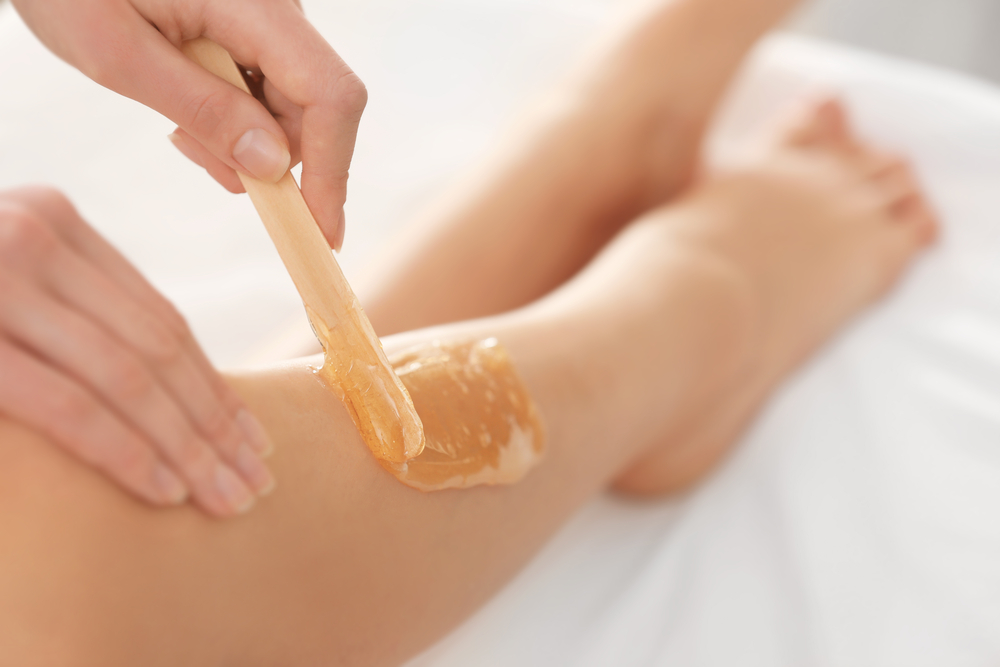Smooth legs in the summer can make all of us feel fantastic.
Waxing is not only a terrific way to remove hair, but it can also help us avoid having to shave our legs all the time.
Aside from the numerous benefits of waxing, one disadvantage is the redness that can persist after the waxing.
Irritation is caused by pulling the hair out of the follicle, but the majority of the redness is caused by tugging at the skin. It usually appears shortly after the waxing, especially if you’re sensitive. Pimples after waxing face are very common.
It’s not a big deal, though, because it usually goes away by the end of the day. There are, however, speedier ways to relieve discomfort than simply waiting it out.
Let’s understand the cause behind the appearance of redness and bumps on your skin to answer your question ‘how to get rid of redness after wax’?
Table of Contents
What Causes Skin Redness After Waxing?
The cause behind it can be very minimal to severe allergic issues. Let’s know more.
Contact Dermatitis
An allergic reaction or irritation causes contact dermatitis.
Fragrant soaps and detergents are popular culprits, but contact dermatitis can also be caused by wax and any compounds it contains.
The pimples after waxing face usually appear due to contact dermatitis. You can experience following symptoms:
- A stinging sensation of burning
- skin peeling and swelling
Folliculitis
Folliculitis is characterized by itchy lumps with a red ring around them. They may also resemble acne breakouts.
It is caused by damage caused by hair removal. Invading microorganisms are more sensitive to damaged hair follicles.
Wearing clothing that rubs against the hair follicles might irritate them even more, making the problem worse.
According to a study, 28 women who experienced folliculitis following waxing had waxed their arms.
Folliculitis is more prone to develop on the areas of the limbs closest to the torso, such as the thighs and upper arms.
Ingrown Hair
A week after waxing, an ingrown hair may occur. Hair grows and reinserts itself into the hair follicle, causing ingrown hairs.
Ingrown hairs can create irritating, sometimes painful lumps on the skin that resemble pimples. Ingrown hairs can become infectious if not treated.
Infection symptoms include pus seeping from the hair follicle, the area feeling warm to the touch, and, in certain circumstances, an ingrown hair cyst.
Home Remedies to Get Rid of Redness after Wax: Solutions for You
Enough cribbing; now, let’s talk about the solution!
According to the top dermatologist in Karachi, Dr. Syed Jaffar Imam “These tiny red bumps develop due to inflammation and may last up to a week.” But there are ways you can get rid of them sooner and show off your smooth skin. Here are some quick ways to get rid of this bumpy, red skin after waxing.
Apply Aloe Vera Gel
This is one of the best home remedies to get rid of redness after wax.
After your waxing, apply pure aloe vera gel from the aloe vera plant to the affected area.
The aloe vera gel will relieve inflammation and soreness once it has been absorbed by your skin.
If you don’t have access to the plant, you can use aloe vera gel products that are commonly accessible, but make sure they don’t contain alcohol.
Use a Cold Compress
Combine equal parts milk, water, and ice to make a chilly compres. Apply this cold compress to the affected area.
To reduce the look of redness, apply this to your skin for five minutes and then repeat three times.
Your skin will benefit from the cool compress while it heals.
Make a Cucumber Mask
Cucumber can easily be one of the easiest available home remedies to get rid of redness after wax.
To relieve the discomfort, apply a cooling cucumber mask.
Cucumber mask’s antioxidant capabilities aid in the healing of red and irritated skin.
Slice cold cucumbers and apply them directly on your skin to make a cucumber mask. You can also form a paste out of it and apply it to the waxed area.
Add Lavender Oil to Your Moisturizer
Lavender oil has antibacterial and antifungal characteristics.
Mixing it into your skin cream and applying it to your body will help heal your skin. It will also stimulate the formation of scar tissue if your skin has been harmed.
Use Chamomile Oil
Chamomile oil is an excellent anti-inflammatory ingredient that can help with inflammation.
Apply a few drops of chamomile oil to an ounce of jojoba oil to your skin.
It will seep into the deeper layers of your skin, reducing the redness. Wash it off with cool water after 15 minutes.
Use a Mint and Green Tea Mask
You can use mint and green tea to relieve pain and mend damaged skin.
Mint is a natural pain reliever, and the tannin in green tea can help ease discomfort.
Take 5 green tea bags, 3 cups of fresh mint leaves, and 950 ml boiling water to prepare this solution.
Allow at least one hour for the mixture to steep and cool. Then, using a cotton ball, administer the liquid. Alternatively, the liquid can be poured directly on the affected area.

Use Some Milk for Your Skin
Milk’s moisturizing and skin-soothing characteristics are excellent for treating dry, irritated, and inflammatory skin.
Furthermore, cold milk can aid in the reduction of pain and/or redness.
In a dish filled with cooled milk, soak a cotton pad and apply a generous quantity over the waxed regions.
Allow the air to dry before washing in cold water. Follow this at least three times to get the best results.
How Can You Prevent Future Redness and Irritation after Waxing?
The simplest and most efficient technique to avoid bumps appearing and redness of the skin after waxing is to cleanse and exfoliate on a regular basis.
To avoid the accumulation of dead skin cells and other debris, use a light scrub or exfoliating cloth every other day at the very least.
It’s critical to keep your appointments once you’ve started waxing. To correspond with your hair’s normal growth cycle, they’re usually spaced four to six weeks apart.
Your growth pattern is disrupted if you arrange an appointment outside of this time frame – or if you utilize alternative hair removal methods in between treatments. Irritation and ingrown hairs are more likely as a result.
If you feel your skin issues are much more than just an aftermath of a waxing session, consult with a well-known dermatologist to satisfy your queries.
